Artists bring ‘hidden truths’ of epilepsy to light in art exhibition at Marina Park
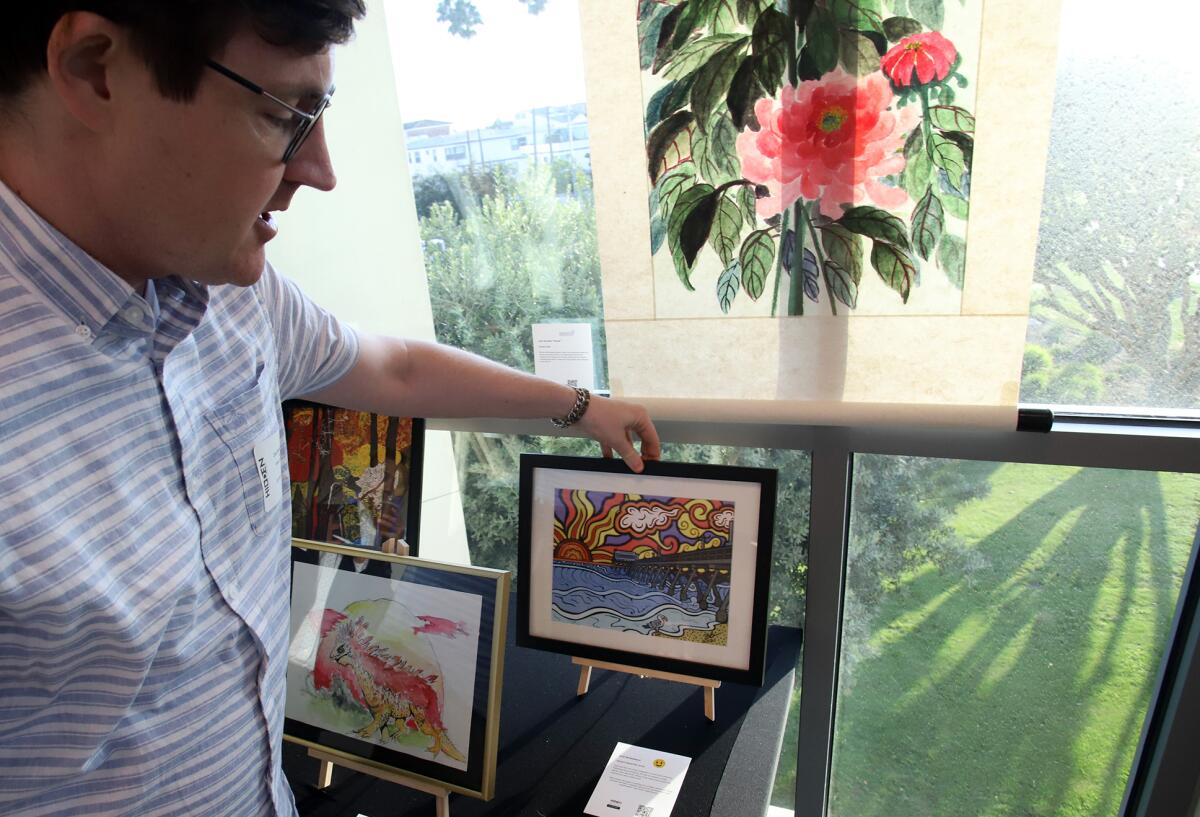
A unique art show in Newport Beach last weekend sought to promote awareness of epilepsy and to empower individuals living with the neurological disorder that causes seizures.
Held at the Marina Park Community Center, “1:26 The Art of Epilepsy” was hosted by the Hidden Truths Project, founded by Dr. Julie Thompson-Dobkin. She describes epilepsy as an invisible disability.
The name of the show reflects the number of people in the population — one in 26 — who live with the disorder.
Costa Mesa artist Zach Beckemeyer is one of them.
For Beckemeyer, art turned out to be just the balm he needed.
Beckemeyer was first diagnosed in 2011 when he was 22, after he had a seizure in the passenger seat of his mother’s car while they were on their way to a nephew’s birthday party.
He’s since had two surgeries to address his epilepsy that removed 3 millimeters of his brain. The operations, after which he had to relearn to walk, speak, read and write, allowed him this week to say he’s been seizure-free since August 2018.
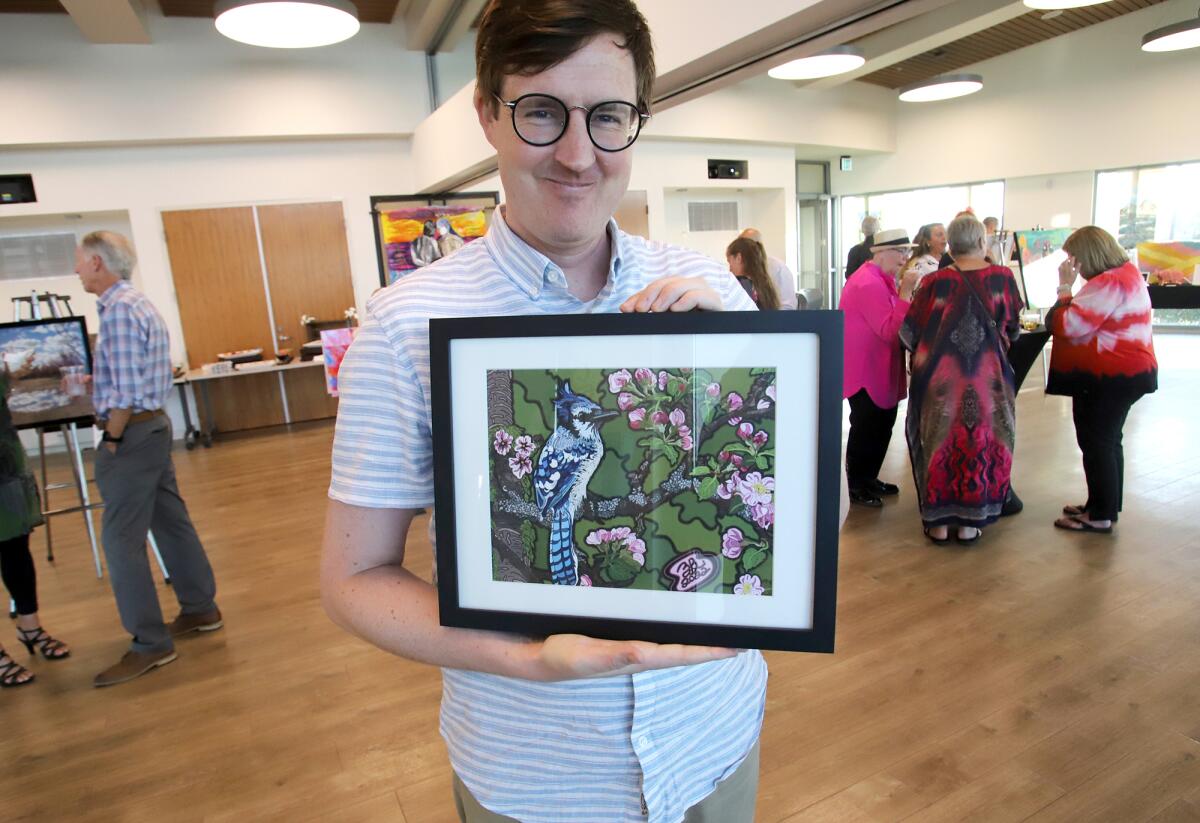
Beckemeyer said he found art by accident in 2017 but that it has since become a therapeutic in ways that he hadn’t expected for him both physically and mentally.
“I was just feeling like I was in a good mood one day. My niece was turning 13 at the time. She’s starting to really get into music. I’m a huge music fan. I play instruments myself,” said Beckemeyer. “We would always play around. I’m going to try and draw something for us. I ended up finding an idea in my mind and it was a little cheeseburger monster type of a thing.
“It was kind of goofy. It had these wiggly arms, these big eyes. It was black and white and it said happy birthday on it and she still has that today. Turned out she loved it so much she wanted it on a T-shirt.”
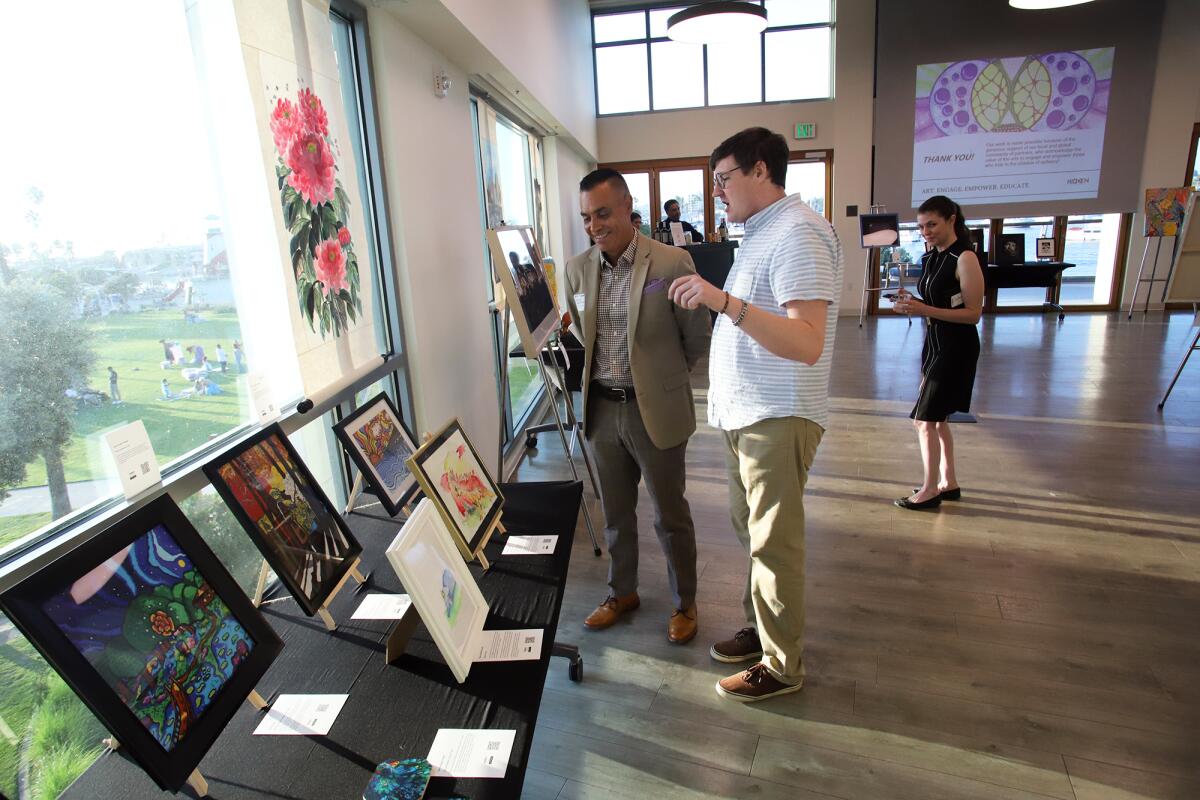
So, Beckemeyer printed out a few T-shirts, sold them and said that the sales gave him the confidence to keep going. He said he would frequent local cafes every morning, order coffee and draw in a small sketchbook until he started experiencing tremors and struggled with his mental health. So, he took a break from that ritual.
It wasn’t until the last two or three years that he picked up a pen again and completed a drawing every day, he said.
“I just realized, wow, this feels great. This is nothing I’ve ever experienced. The only thing I’ve ever experienced of that nature that really made me feel comfortable was playing my drums and playing my guitar,” said Beckemeyer, who added with a laugh that his apartment walls are too thin to even consider playing his drums today.
“The thing with artwork is that it was helping out the physical problems I was having, such as the shakiness and the tremors. But all of my perspective ... it was a deep concentration on an entirely new universe and ... it was some kind of a high that I got out of it,” said Beckemeyer. “Before then, all I did all day was smoke marijuana and cigarettes. But when I realized how much of a better feeling [art gave me] … that completely cut me out from smoking anything.”
He creates his artworks first by pencil, then by Sharpie pen and then he’ll scan the image into Adobe Illustrator to add color. He said drawing makes all the negative thoughts about his situation, about challenges he’s facing, evaporate.
“I was not expecting this to turn into anything more than a hobby,” Beckemeyer said of his art being selected for the exhibit. “I feel less like a grain of sand in a beach more like a stone that’s rolling around on top of it.”
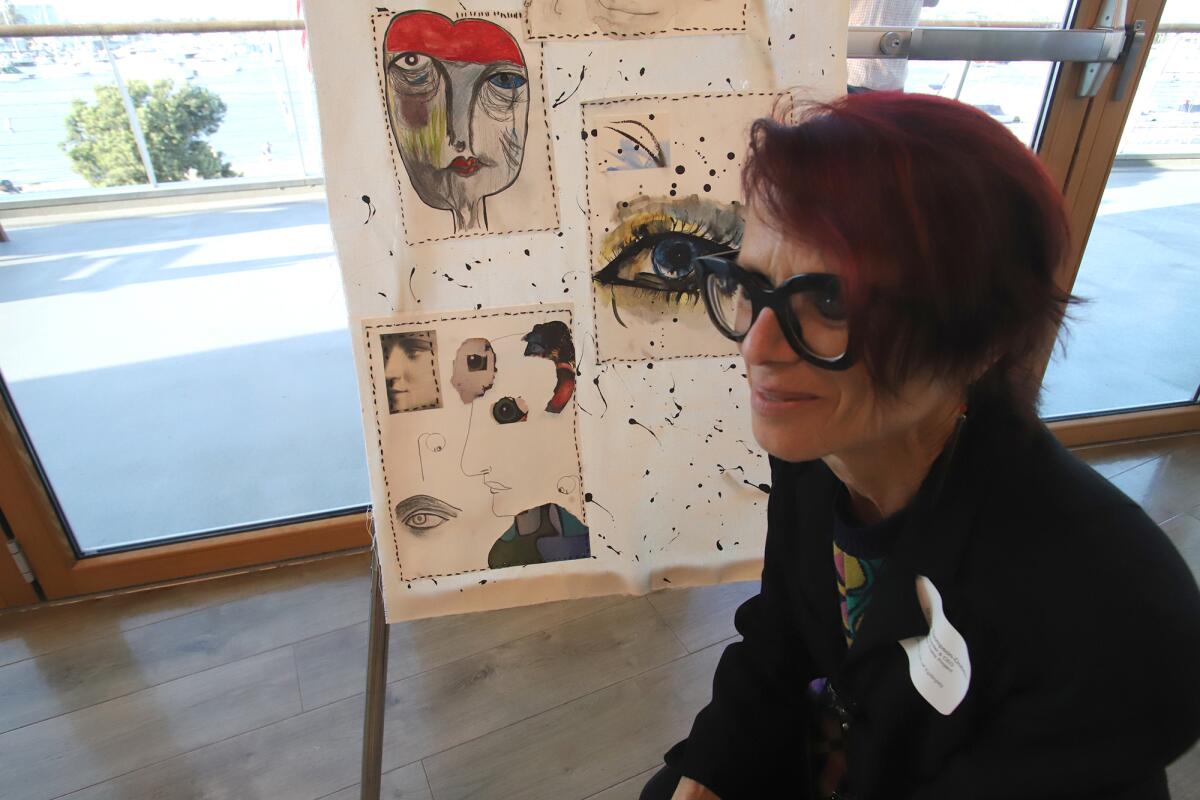
Hidden Truths founder Thompson-Dobkin is a neurologist and mother to an epileptic son.
“This began as a personal journey to raise awareness, make epilepsy speakable, and empower people with this condition,” said Thompson-Dobkin. “We also seek to help these individuals find acceptance, understanding, and not become labelled by their diagnosis. The use of this creative platform became a tool to engage the public and educate them to the realities of what it means to live with epilepsy.”
The organization works with about 500 epileptic artists globally. This year the artists showcased in the exhibit are patients in neurologist Dr. David Millett’s practice at Hoag Pickup Family Neurosciences Institute.
“One in every 26 people will develop epilepsy over the course of their lives. That’s one kid in every classroom. Most organizations, you can look around the boardrooms, the lunch room — there is someone in there that probably has epilepsy and if not in that room, then has a relative or someone close that deals with it,” Millett said in an interview this week. “It’s extremely common.”
But, the caveat is that many living with the disorder, he said, are fearful of telling people or feel that they are unable to for a variety of circumstances.
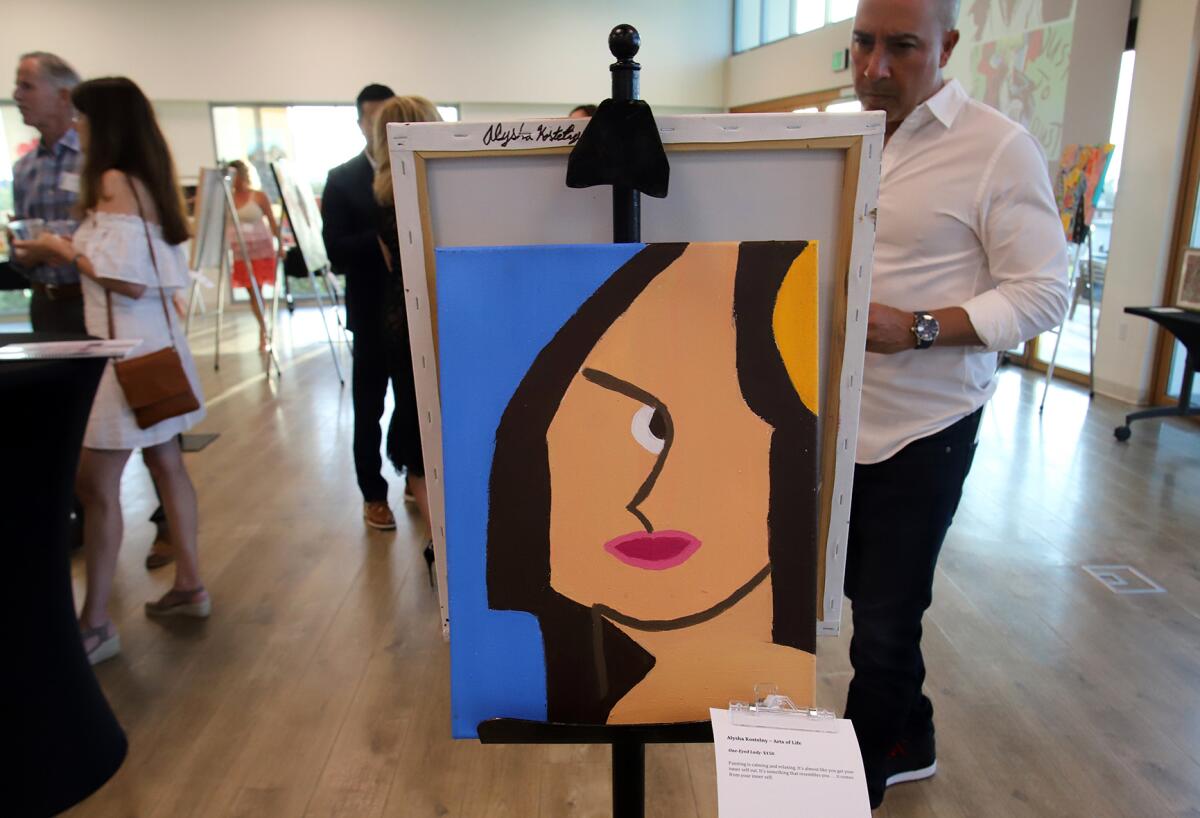
“Most people have well-controlled seizures, but they don’t want anybody to know. Not their friends, their employers, their neighbors, even if they take medication every day,” Millett said.
Millett said it’s not unusual for people who cannot control their seizures to attend exhibits that promote awareness for the condition because they feel accepted there.
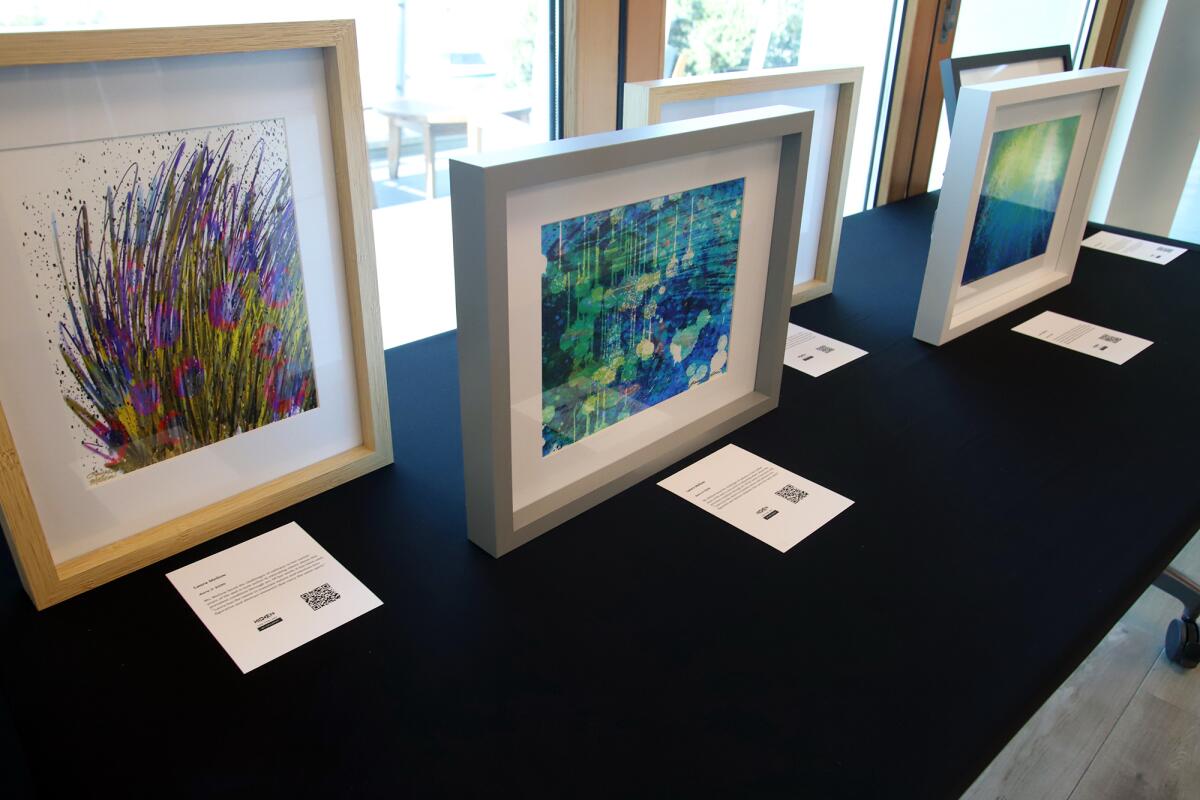
“[It’s a] lack of understanding of the different causes of epilepsy. The majority of [patients], at least two-thirds, can be well controlled on medication, but ... there is a silent burden of disease in the community,” Millett said. He noted patients live knowing there is a potential for breakthrough seizures. They also might experience side-effects of medication that can inhibit their ability to handle tasks the general population takes for granted, such as driving and going to work.
Millett said Hoag Memorial Hospital Presbyterian sponsors a number of health and wellness events for patients with epilepsy, including the Hidden Truths Project exhibit.
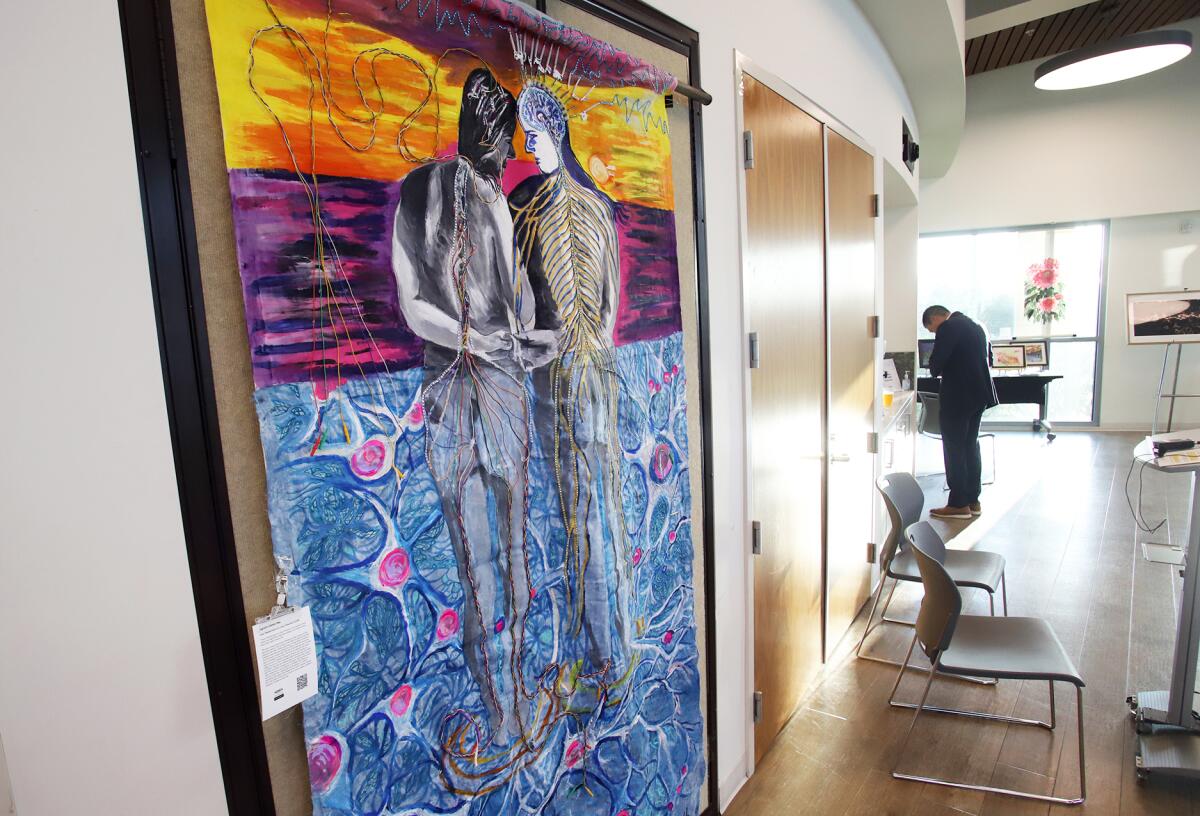
Millett said he’s been in communication with Thompson-Dobkin for several years and noted that art provides outlets for patients to not only grapple with the psychological effects of epilepsy but also to celebrate their ability to overcome it and create objects of beauty.
“It’s a statement to the human will to overcome and to not be controlled by the disease process, but to use it for their own personal development and expression,” Millett said.
All the latest on Orange County from Orange County.
Get our free TimesOC newsletter.
You may occasionally receive promotional content from the Daily Pilot.




